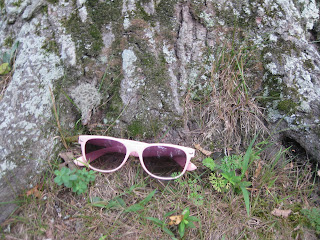AP Biology
Sunday, September 4, 2011
(Sepal)
The sepal is a part of the outer ring of leaves of the non fertile parts that surrounds the fertile organs of the flower. It is one of the green parts that forms the calyx of the flower.The amount of sepals is often the same number of petals on the flower and they are centered over the petal divisions.Some sepals are colored like the actual petals and others fall off after the bud opens.the sepals help protect the flower while it is still a bud.(The sepals are small on this flower)
Works Cited
sepal. (2011). Retrieved September 4, 2011, from http://www.thefreedictionary.com/sepal
(C4 Plant)
A C4 plant is a plant that first fixes CO2 into a compound that has four carbon atoms before entering the Calvin Cycle of photosynthesis. C4 plants use carbon fixation. Carbon fixation is a process by which a plant removes carbon from the atmosphere and makes it into a solid. Corn (above) is an example of a C4 plant.
Works Cited
Stabler, L.B.S, Metz, M.M., & Gier, P.G. (2010). AP Biology. New York: Kaplan Publishing.
Friday, September 2, 2011
(Base)
Bases are ionic compounds that break apart to form a negatively charged hydroxide ion (OH-) in water.Often bases are soapy, slippery and taste bitter. Stronger bases are dangerous and capable of burning skin. On the pH scale an base is any pH number higher than 7 on the scale that ranges from 0-14.some examples of bases are blood, antacid, ammonia, laundry detergent (above), Drano and egg whites.
Works Cited
Acids and Bases. (2011). Retrieved September 2, 2011, from Chem4Kids: http://www.chem4kids.com/files/react_acidbase.html
Acids, Bases, and the pH Scale. (2002-2011). Retrieved September 2 , 2011, from http://www.sciencebuddies.org/science-fair-projects/project_ideas/Chem_AcidsBasespHScale.shtm
(Bryophyte)
A bryophyte is a land plant that does not have vascular tissue to circulate liquids.They have enclosed reproductive systems and tissue. Bryophytes do not produce flowers or seeds. Some examples of bryophytes are moss (above) and liverworts.
Works Cited
Bryophyte. (15 April 2007). Retrieved 9/2/20011, from http://www.biology-online.org/dictionary/Bryophyte
Works Cited
Bryophyte. (15 April 2007). Retrieved 9/2/20011, from http://www.biology-online.org/dictionary/Bryophyte
Tuesday, August 30, 2011
(Fermentation)
Fermentation is an energy releasing process that occurs with a lack of oxygen. The results of fermentation are the break down of carbohydrates and other complex organic substances into simpler substances. In yeast and in most plant cells, fermentation produces ethyl alcohol, which is the most important ingredient in beer and wine, water and carbon dioxide.
Works Cited
Armstrong, E.A. (2004). The Importance of Fermentation. Retrieved August 30. 2011, from http://www.treelight.com/health/nutrition/Fermentation.html#pageToc1
Friday, August 19, 2011
(Endotherm)
An Endotherm is a warm blooded animal; an animal that can create internal heat. Endotherms regulate body heat to maintain a constant temperature. Animals have evolved various strategies to regulate their body temperature. Some animals such as dogs pant while others sweat to reduce their body temperature. In the picture there are two legs that are connected to a human body. Humans are examples of endothermic animals.
Works Cited
Gray, P. (Ed.). (1970). The Encyclopedia of Biological Sciences (Vol. 2). New York: Van Nostrand Reinhold Co.
M. ( May 28, 2010). Difference Between Ectotherms and Endotherms. Retrieved August 9, 2011, from http://www.differencebetween.net/science/difference-between-ectotherms-and-endotherms
M. ( May 28, 2010). Difference Between Ectotherms and Endotherms. Retrieved August 9, 2011, from http://www.differencebetween.net/science/difference-between-ectotherms-and-endotherms
(Fungi)
Fungi is the kingdom of Eukaryotic organisms that don't have vascular tissues and chlorophyll. Fungi can reproduce through its asexual pores and sexually produced pores or just through its asexual pores.Fungi reproduced by both asexual and sexually produced pores are called perfect fungi while fungi reproduced with only asexual pores is called imperfect fungi . An example of fungi would be the mushroom, Honey Fungus (Armillaria mellea)(above). this mushroom appears to have fallen off of the stem that was once connected to a tree.
Fungi. (June 15, 2008). Retrieved 8/19/2011, from http://www.biology-online.org/dictionary/Fungi
Fischer, D.W.F. (2006, 2007). The Basics of Mushroom Identifacation. Retrieved 8/19/2011, from http://americanmushrooms.com/id.htm
Subscribe to:
Comments (Atom)






